- Home
- Alistair Moffat
The Secret History of Here Page 25
The Secret History of Here Read online
Page 25
24 August
The morning glories of our little valley glowed in the sunshine. Summer had come back. But instead of working outside, working up a sweat, I intended to spend the morning in complete black-darkness in the bowels of the earth. Walter had sent me a remarkable photograph of a tunnel under the courtyard in front of Haining House that led to a deep ravine, the Clock Sorrow, the stream that drains the waters of the loch into the River Ettrick. Believing discretion to be the better part, Walter (or more likely Evelyn, Mrs Elliot, advising that it definitely was NOT a good idea for an eighty-four year old) declined to join the expedition, and Rory Low and I agreed to meet and explore.
And immediately we went the wrong way, completely missing the entrance. Scrambling down into the Clock Sorrow, we found another opening in the steep bank, what we thought was the beginning of the tunnel. With well-made lintels and jambs of cut and dressed sandstone, and a broken set of steps that led up to the courtyard, we were sure this was it. Not believing in discretion, and not willing to wait for the younger and fitter man to lead the way, I crawled across the mud that had piled up at the entrance. After a yard or two we were able to stand upright, phone torches in hand. And a step further was very nearly a step too far. Rocking forward slightly with my momentum, I found myself standing on the damp, slippery and sheer edge of a deep pit of fathomless darkness. The torches showed it was perhaps twelve or fourteen feet deep, with a bevelled bottom full of rubbish and an eerie echo. Above it was a perfectly domed roof. The air was chill and clammy at the same time.
This was an ice house. When grand mansions like the Haining were built in the eighteenth and nineteenth centuries, many had these curious, windowless, tomb-like structures erected close at hand. Ice will have been harvested from the loch in blocks during the winter (or bought from Norwegian suppliers, if the winter was mild) and stored in this great pit with the bottom rounded like a basin to gather meltwater and packed with straw for insulation. The ice was not used to make drinks cold but to act as refrigeration to keep meat, fish and other perishables from spoiling. Like many of these new mansions, the Haining was built for entertaining and large quantities of food will have been needed from time to time.
Having failed to find the entrance to the tunnel and avoided falling into the ice house, we crawled back out and walked up to the courtyard. Preparations were being made for a wedding and a marquee had been erected next to the big house. Ian Bradshaw chairs the Haining Trust and he showed us where the entrance to the tunnel was. Rory scrambled up the side of the Clock Sorrow, pulled away the branches that had hidden it – and pronounced it too dangerous to enter. But disappointment was mercifully short-lived because Ian offered us a tour of the cellars of the Georgian house. It was fascinating.
More evidence of entertaining on a large scale could be seen in the scores of large wine bins that once held thousands of bottles. Since at least two Pringles had made money in Madeira, it was safe to assume a knowledge of what was good and where to buy it. Under the entrance to the mansion were some much older walls. Built mainly from whinstone (like our farmhouse) with lintels and jambs of dressed sandstone, they were very intriguing. Ian showed us where the entrance to the tunnel had been walled up and there was a small mousehole drain leading into it.
Walter’s photograph from the Scotsman of 8 March 2005 shows a massive construction. No mere drain for water from the loch, this had been built to a height of more than six feet and was two feet, six inches wide. The floor was paved with rounded cobbles, probably excavated from the bed of the Ettrick, the walls were very thick and the roof vaulted. Running for one hundred and fifty feet from under the entrance of the main house, it terminated in the deep declivity of the Clock Sorrow. But what was it for?
The house on the map of 1757 turns out to have had an ancestor. Haining Tower was the style of fortification known as a peel tower, characteristic of the Borders in the late medieval period, the time of the Border Reivers. Built before 1463 and used until the successor house was raised after 1625, the tower was held by the Scotts, a branch of the reiving family that eventually became the Dukes of Buccleuch. These families had to survive in what was essentially a criminal society and the tower was designed to be defended. If attackers looked numerous and likely to be persistent, waiting to starve out or burn out the Scotts, then a means of escape will have been thought useful. Perhaps under cover of darkness the defenders might have made their way quietly along the tunnel, out of the narrow and probably well-hidden doorway in the bank of the Clock Sorrow and down its deep ravine to the Ettrick. Someone who was surefooted and knew the ground well could easily have fled through the tunnel and escaped undetected. It would also have been a useful place to conceal stolen goods and contraband.
When Ian took us back up to the outer courtyard, he told us that a digger working in the courtyard had accidentally skinned the roof off the tunnel and collapsed part of it. It lay only three feet below the surface. That led to a theory about its strange and elaborate construction. Rather than tunnel from the bank of the Clock Sorrow, it is likely that the Scotts dug a deep trench, built the tunnel in it and the covered it over. A dark place built in dark times.
25 August
The faint purr of a quad bike up on the ridge above Brownmoor was a cheering sound, a joy to hear someone up and doing on a still, sunlit morning, checking the ewes and lambs. And on that clear morning the vistas from the ridge must have been long, perhaps already hazy. Diamond-glinting with dew, a trail of thistledown had been caught by the grass at the side of the track at Windy Gates. Like the spoor of a giant snail, it wound around the old road and out of sight. There must have been a night wind. As we passed on our way to the Deer Park, a posse of fat calves, their condition glistening in the warming sunshine, trotted over to the electric fence to stand and stare, gormless, at Maidie and me. Normally fierce, the little terrier hid behind my legs.
Yesterday afternoon Grace came into my office to show me a locket her mum has let her wear. It divides into four folding hearts, each one holding a tiny picture. Grace put the locket in my hand, pointed at the pictures and recited, ‘Mummy, Daddy, me and Hannah’. For a moment I could not catch my breath. For five years of grieving, I have not had the courage to look at photographs of Hannah. But there she was. An image less than a centimetre square, its power overwhelmed me. A tiny head of very dark hair and swaddled in a baby blanket. That was all I could see, and all I could think of was the blanket. It should have kept her warm, but underneath its folds Hannah was cold.
For a day I have carried that image in my head, tears prick-ling often, even as I write this. I have lost the rage at fate, at ill fortune and all of the easy conclusions, but the pain remains and will always remain. I wonder what Grace makes of the tiny photograph. I did not let her see my tears.
26 August
Much of yesterday and today were spent in Edinburgh at the book festival. I gave a talk to about seven hundred people in the main marquee on my book about St Cuthbert and Lindisfarne. It was the first time I had spoken to an audience about it and I was not at all sure about how it went down. But when I walked around the festival site today for about twenty minutes five people approached me to say it was good, even ‘brilliant’. That was a relief.
I had some warming moments of a different sort. An Irish journalist I have known for forty years could not come to my event because of failing eyesight but he sent me a letter and a card to thank me for help I had given him in 1977! Remarkable and moving. An old lady from the Isle of Lewis comes to see me each year and we converse in Gaelic. When I kissed her, she clapped my cheek and smiled up at me. From Melrose, a lovely lady who teaches at the primary school brought her great-aunt, Margaret. She is ninety and felt that this was the right time to adopt me.
27 August
The mystery of the yellow ewes is solved. They have been dyed that strange colour so that they can be shown at an agricultural show. With a certain air of disdain, or perhaps puzzlement, my neighbour told me that the
y were not his, definitely, certainly not his, and that he was grazing them for a friend. Apparently sheep are also dyed red and brown for shows. It seems daft to me.
28 August
I have grown fatter. Catching a wince-inducing sideways glance in a full-length mirror this morning, I noticed that without the camouflage of a baggy shirt my belly was sticking out. Out the front. Not a good look certainly, but also a relic of an ancient cycle. When all harvests were in at the end of the summer – corn, garden vegetables, wild berries, fruit, early morning mushrooms and much else – my farm labourer ancestors ate well, better than at any other time of the year. It was a diet my grannie Bina understood and passed on to me, unfortunately. Based on carbohydrates and fat rather than much meat, my people ate porridge with cream or salt and butter, bannocks, scones, dumplings, blood puddings, pies both savoury and sweet, cheese, oatcakes, butter and more baked goods.
Bina was also fluent in the language of soup. Always in the plural, she would say of the ham bone stock and vegetable broth she always had seething on the cooker, ‘They’re better on the third day’ or ‘Aye, they’re good but need salting.’ More like old-fashioned potage, her soup had many and any ingredients, so that it really could only be thought of in the plural.
This diet of the old life, the farming life Bina left behind, is an unwelcome inheritance for me. My people spent their lives in the fields, in all weathers, and they needed as many calories as possible to sustain them. I sit on my backside to work and if I need to lose weight I simply stop eating their diet. But when I splod out two tablespoons of low-fat yoghourt over my seasonal berries (seasonal in Spain), out of the corner of my eye I can see Bina shaking her head.
Bina was born at the farm of Cliftonhill, near Kelso, in 1890 and it often seems to me that my family has walked around the edge of a circle that leads from her cottage to here, one hundred and thirty years later. Just as she did, we dance to a different music of time: the grass clock, horse clocks, dog clocks and the all-governing weather clock. In contrast to the problems of my expanding waistline, the animals who live outdoors need to eat as much they can so that they store fat for the lean months of winter. When I check the horses in the outbye fields each morning, even the oldest of the Old Boys look sleek. The grass clock is running slow because of the perfect growing weather we have had, and it will last long into the late autumn. Calorie derives from the Latin calor, for heat, and the Old Boys are busy stoking their internal boilers as they munch their way methodically through the juicy, sweet, rain-fed grass.
I find these ancient rhythms consoling, an antidote to the countdown of the months and years.
I watched a tiny acrobat performing this morning. A grey squirrel ran along the top rail of the gate into the Deer Park before skipping along the fence, turning with a flick of its bushy tail and running back along the gate. It seemed to me to be sheer exuberance.
29 August
As summer draws in, the swallows are preparing to leave, feeding on the abundant flies to store energy, the young chicks bulking up for the long and perilous haul to the South African sun. Soon they will begin to perch in long rows on the telegraph wires, massing, perhaps even bonding, before their flight south. Our parent swallows certainly recognise their own chicks, and born in the same small stable yard it seems likely that the different families of swallows know each other. Perhaps this is fanciful, wishful, but I like to think of them on their epic journey, flying two hundred miles a day, as the Henhouse Gang. How they find us again each spring is a magical mystery to me.
30 August
Worlds away from it and yet intimately connected to the life of our little farm, I found myself in Edinburgh touring book-shops to store up winter reading. Pure pleasure, and a heavy bag.
31 August
Sometimes I think I allow dog poop to influence my mood too readily. If Maidie does one during our morning walk, and again when I take her out after her supper, that is a good day. If she is distracted and refuses or forgets to perform and I have to clean up the consequences off the floor, scrubbing and spraying, that is not a good day. As I stare at my dog’s back end, my world feels as though it is shrinking.
September
1 September
Grace has recently taken to painting small stones. Bright ultra-marine blue, hot pink, white and red seem to be favourite colours. When she completes a batch, Grace then places them carefully at the foot of an upstanding feature: below the stone birdbath on one of the lawns, at the side of the Wood Barn, behind a water bucket, or by the purple acer at the gate into the stable yard. She must wait until the coast is clear, when Lindsay and I are in the house, before the ritual of placing takes place because I have never seen her doing it. What archaeologists will make of this in two hundred years’ time I do not know. Perhaps only Grace does.
The first day of autumn sees the magical emergence of funghi of all sorts. The overnight temperature must have been optimal. On the margins of the Top Track and on the lawn by the birdbath, I have seen four sorts. A tall white variety known as lawyer’s wig looks particularly evil. It is classified as Coprinus, which means ‘living off dung’, and while it is edible, it should not be consumed with alcohol. If you eat lawyer’s wig with a glass of wine, you will vomit. Perhaps one day we will have to harvest all the sorts that can be eaten.
A mole has been busy on the lawns. Probably only a single individual, he or she has turned up about a dozen molehills of beautifully tilthed soil which I shall gratefully scoop up to mix with peat. I need to sort the greenhouse so that we can enjoy some decent autumn crops of lettuce and tomatoes.
2 September
Swirling and swooping so quickly across the track through Huppanova and dodging between the entirely unconcerned grazing cows, swallows are difficult to count. But there might have been as many as fifteen or twenty flying in front of Maidie and me this morning. They seemed not to be feeding but showing off, perhaps to each other. It is a melancholy moment when they go. The skies seem empty as summer ends, the light dims and the cold days of winter come on.
I have been steadily sawing and splitting kindling for the last few weeks and now the store near the house is full to its roof. Each day I chop ten logs from the great dump of the fallen beech tree and stack the dense, dry wood in the barn. When my daughter, Beth, and her husband, Ross, come down from Glasgow for a weekend, we will spend an afternoon and perhaps a morning filling up the stacks to see us through until next spring. It is a fulfilling task, one that brings immediate benefits, as the stoves crackle and flame and the dogs sink down on the sheepskin rugs to sleep in their glow.
But all is not yet done with this summer. This morning I noticed that the clear-felled wood to the south of the Haining Loch still lived and was fighting back. Suckers were pushing up beside the cut trunks. There were ash saplings and red chestnut, as well as many rowans. If it was left alone and deer kept out, the old wood would regenerate.
3 September
Last night when I let Lily off the lead to pee, she became very excited, spinning around at the bottom of the steps to the terrace. As the darkening nights draw in, I carry a torch and it lit a very welcome sight. A large hedgehog had wedged itself against the bottom step and was showing all of its bristles to the curious dog. It is many years since I saw Mrs Tiggywinkle scurrying up the Bottom Track with her little ones behind her, and here was her granddaughter or perhaps her grandson, one that had survived the attentions of the badgers. Last year Lindsay bought a badger-proof nesting box and hid it under the stand of Norways and ash near the farmhouse, and it seems to have become home for these eccentric little creatures.
5 September
The fencers have almost finished in the Deer Park and now I hope they will build our dog run near the farmhouse. Maidie will love the freedom and some of that aggressive energy will burn off harmlessly.
6 September
Buried deep, lost in the lush grass of the Doocot Field, Rory has found more memories of Rita and Edek’s love affair, a fra
gment of what might have been an exchange, perhaps parting words. Ten yards from where he found the cigarette lighter engraved with their names, Rory has discovered a small enamelled army badge. Richly decorated and dominated by the eagle motif, and with Poland rather than Polska inscribed below it, it has a silver patch of solder on the back that matches a blob Rory saw on the lighter.
How and why did it become detached? If it was simply a poor piece of soldering, then it could have come off at any time. Perhaps it fell off when the lighter was lost in the field or when it was thrown away. Later ploughing could have moved it ten yards. Or maybe this keepsake was deliberately defaced, the Polish army badge torn off and cast away at the end of a love affair, perhaps when Edek was posted abroad as the Allies invaded Italy. The lighter was kept for a time because it was useful, valuable, but then the reminder of the engraved names persuaded Rita to throw that away too. Despite enquiries made amongst the older generation in Selkirk, those who were alive and aware during the Second World War, no one remembers Rita and Edek. But after seventy-five years buried in the darkness of the Doocot Field, their love affair has emerged back into the light.
Near the old western road into Selkirk, Rory’s detector buzzed once more as he discovered a strange sort of medieval coin, a token of a different kind of love. Dating from the reign of Henry III of England (1216 to 1272), it had been carefully and deliberately folded in half over a thong or leather lace of some sort. Rory believes it represents a devotional act, a coin carried on a strap or perhaps around the neck. Pilgrims were always expected to give money to the keepers of shrines in return for prayers or a token that confirmed the completion of their penitential journey. Medieval Christianity was transactional. In return for money, land or privileges given to the church, benefits were expected, usually those associated with the afterlife, such as shorter terms in purgatory. It may be that this coin was folded and carried in this way to ensure it could never be used as currency by the giver until it was handed over, or perhaps blessed as a remembrance of a pious act.

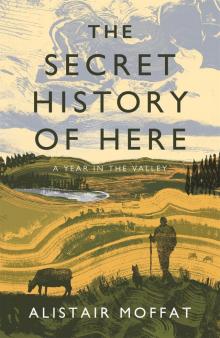 The Secret History of Here
The Secret History of Here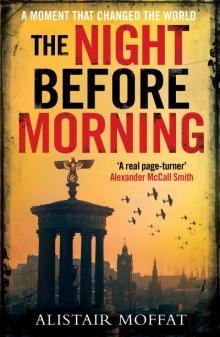 The Night Before Morning
The Night Before Morning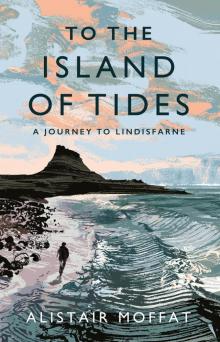 To the Island of Tides
To the Island of Tides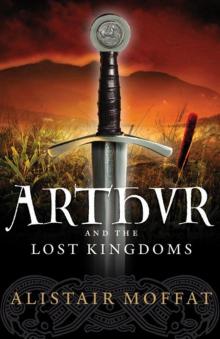 Arthur and the Lost Kingdoms
Arthur and the Lost Kingdoms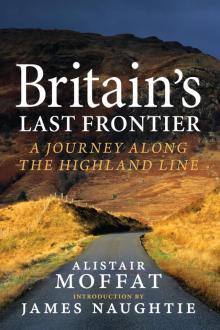 Britain’s Last Frontier
Britain’s Last Frontier The Faded Map: The Lost Kingdoms of Scotland
The Faded Map: The Lost Kingdoms of Scotland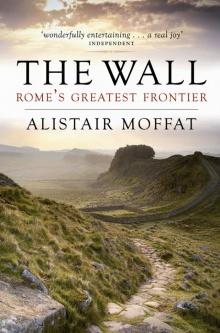 The Wall
The Wall